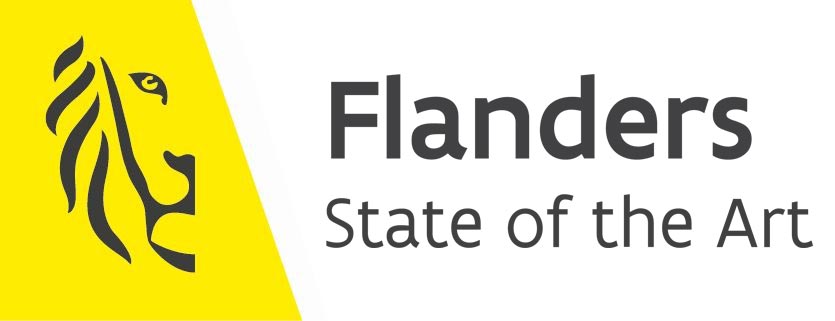Infrabel
Infrabel enriches geodata and tools for rail workers
Quick access to railway tracks is crucial for infrastructure managers. This is necessary not only in the event of accidents or faults but also for regular maintenance, repairs and improvements to the railway infrastructure. Since the existing digital maps were inadequate for this purpose, Infrabel enriched them with its own geographical data. To convert all this data, Infrabel hired Nordend: a specialist in building efficient processes with spatial data.
When you think of access to the railway, level crossings might be the first thing that springs to mind. However, other access points exist, and Infrabel’s rail workers must also be able to reach them easily at any time. As IT project manager Kurt Decock explains, this raises a number of practical questions: ‘Can they get there on foot? Is there parking nearby? Can they access it with heavy equipment?’ Answering these queries is vital to ensuring everything runs smoothly.
“The improved routing means that our technicians can gain access to the tracks more quickly than ever before. This project’s success is partly due to Nordend’s professional approach and in-depth knowledge.”
Kurt Decock, IT Project lead CAE & Innovations at Infrabel
OpenStreetMap
The solution was right under Infrabel’s nose: digital geographical maps and tools that address all these practical questions and guide workers to the desired access point in one go. However, designing such a solution was easier said than done. For example, Google Maps only provides limited geodata, and so Infrabel needed to look elsewhere for the level of detail they needed for their specific mapping and navigation applications. ‘The service roads that our technicians use, for example, are missing from those maps’, Kurt Decock clarifies.
At the same time, Infrabel wanted to get rid of the more expensive commercial mapping and navigation systems it had relied on so far. The free, open-source alternative OpenStreetMap (OSM) soon came to mind. ‘In order to provide an even better service to our own business customers, we resolved to bend the platform to our will as much as possible’, the IT project manager recalls. Nonetheless, the services provided by OpenStreetMap itself were still not detailed enough for Infrabel – nor were they sufficiently designed for the needs of a railway company.
Tailor-made solutions for railways
‘OpenStreetMap contains a lot of data’, Kurt Decock explains, ‘too much data sometimes! I’m talking about things like cycle paths and forests. As interesting as these features are, we filter out that data.’ What’s more, the raw OSM data isn’t always correctly structured. ‘That’s another thing we soon discovered.’
‘Ultimately, our goal was to process raw data into an information product or software application useful to us as a railroad company.’ In concrete terms, this meant, for example, a geographical map that Infrabel employees could view both in the office and on the go, on their mobile phones. ‘It was important to keep the base map small enough for employees to download without using up all their 4G.’
“Our cooperation with Nordend is going extremely smoothly and we are particularly satisfied with the expertise of Nordend’s consultants. We know all too well how difficult it is to find such experts today.”
Kurt Decock, IT Project lead CAE & Innovations at Infrabel
FME integration platform
The challenge in this project was to select and edit the raw data according to Infrabel’s needs, and then present it using the rail manager’s tools. To tackle this challenge, the state enterprise sought a local IT partner to help them edit and convert the raw data. Kurt Decock and his team selected FME, a data integration and transformation solution developed by Safe Software, to make this possible.
Nordend, a local FME specialist, was selected as the best option in a public tender. ‘We are very satisfied with our collaboration’, says Kurt Decock. ‘It’s going extremely smoothly. We are particularly satisfied with the expertise of the consultants at Nordend. We know all too well how difficult it is to find experts like this in the market today.’
Improving data quality
When editing the OSM data, Infrabel filters out certain data. It also adds its own data, in addition to third-party data, such as the Lambert 72 coordinates, which have formed the basis of Belgian topographic maps since 1972. ‘We start from a base map from which we extract data on railroads. Whenever possible we prefer to use our own data, which is more accurate and complete. The same applies to data on service or access roads. We layer that proprietary data on top of the OSM base map.’
We use a similar strategy when converting addresses to geographic coordinates. ‘For this geocoding, we work with addresses from three regions – Flanders, Brussels and Wallonia – and therefore also with three different data sources. The addresses contained in the data are not always complete or correctly translated, which means we also make the necessary corrections to that as well, thus improving data quality.’
‘But the most important thing remains the improved routing,’ Kurt Decock concludes. ‘This means that our technicians can gain access to the tracks more quickly than ever before. This project’s success is partly due to Nordend’s professional approach and in-depth knowledge.’
Challenges
- Convert data to a data source usable by the various applications within Infrabel
Results
- Shared background map for all internal applications
- Each department places its own assets on the same background map
Solutions
- FME workflow for data conversions
- Generic workflow for importing, with specific conversion workflow tailored for Infrabel
Technologies
- FME
- ESRI Web Services


